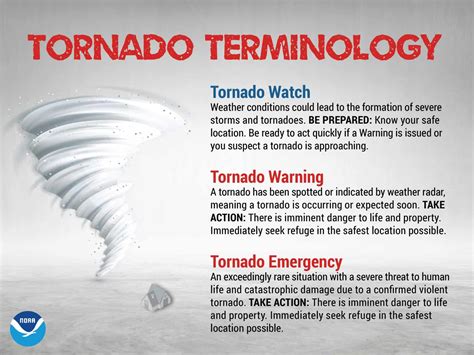
**”TORNADO TEARS THROUGH HEARTLAND: Families Devastated, Search for Survivors Underway”**
The American Heartland is reeling from the devastating aftermath of a powerful tornado that ripped through the region late yesterday. Families are left picking through the rubble, desperately searching for loved ones as rescue teams work tirelessly against the clock. The sudden and ferocious storm brought widespread destruction, leaving homes flattened and communities shattered. While a **tornado warning early** in the evening offered some residents a chance to seek shelter, the speed and intensity of the twister overwhelmed many. This article provides the latest updates on the ongoing search and rescue efforts, shares heartbreaking stories from those affected, and examines the critical need for immediate aid and long-term recovery support. We’ll also delve into preparedness measures and what residents can do to stay safe when facing future severe weather threats in the heartland.
TORNADO TEARS THROUGH HEARTLAND: Families Devastated, Search for Survivors Underway
A devastating tornado tore through the heartland of America last night, leaving a trail of destruction and despair in its wake. Entire communities have been leveled, homes reduced to rubble, and families shattered. Emergency services are working around the clock, battling debris and treacherous conditions to locate survivors and provide aid to those affected. The scale of the devastation is immense, and the long road to recovery has only just begun. The nation mourns with the affected families, offering prayers and support during this incredibly difficult time. Initial reports suggest that this could be one of the most powerful tornadoes to strike the region in recent history, exceeding even initial worst-case scenarios. Many residents reported hearing the loud roar of the tornado before seeing it descend upon their towns, leaving them little time to react. The focus now shifts to rescue and recovery efforts, but the emotional and economic impact will be felt for years to come.
Widespread Destruction and Heroic Rescue Efforts
The area impacted by the tornado is vast, stretching across multiple counties. Images emerging from the scene depict scenes of utter devastation. Homes are ripped from their foundations, vehicles are tossed like toys, and debris litters the landscape for miles. Power lines are down, leaving vast stretches of land without electricity. Communication networks have been severely disrupted, making it difficult for families to connect with loved ones and for rescue teams to coordinate their efforts. Despite these challenges, emergency responders, including local police and fire departments, alongside national guard units and volunteer organizations, are tirelessly working to locate and rescue those trapped beneath the debris. Specialized urban search and rescue teams have been deployed, using advanced equipment and trained dogs to locate survivors.
The urgency of the situation is palpable. Every minute counts in the search for those who may be trapped. Medical teams are on standby, ready to provide immediate care to the injured. Shelters have been established in neighboring towns and cities, offering temporary refuge to those who have lost their homes. Volunteers are pouring in from across the region, offering assistance with everything from clearing debris to providing food and water to displaced families. The spirit of resilience and community is shining through even in the face of this tragedy. However, authorities are emphasizing the importance of heeding all tornado warning issued in the future, stressing that early preparation is crucial for minimizing casualties during such extreme weather events. The Red Cross is actively accepting donations to assist in providing immediate relief and long-term recovery support. Officials are urging people to avoid the affected areas unless they are trained rescue personnel or volunteers coordinating with official organizations to ensure the safety and efficiency of the rescue efforts. Stories of heroism are emerging from the wreckage, tales of neighbors helping neighbors, and strangers risking their own lives to save others.
Families Shattered, Communities Reeling
The human cost of this tragedy is immeasurable. Families have been torn apart, with loved ones missing or confirmed deceased. The emotional trauma experienced by survivors is profound. Many have lost everything they own, their homes, their possessions, their sense of security. Children have witnessed scenes of unimaginable devastation. The mental and emotional scars will likely linger long after the physical wounds have healed. Grief counselors are being deployed to provide support to those who are struggling to cope with the loss and trauma. The community is rallying together to provide emotional support and practical assistance to those in need. Fundraisers are being organized to help families rebuild their lives. Vigils are being held to honor the victims and to offer comfort to the bereaved. While the immediate focus is on rescue and relief efforts, attention will soon need to turn to the long-term recovery process. Rebuilding homes and infrastructure will be a monumental task, requiring significant financial resources and logistical coordination. Moreover, addressing the emotional and mental health needs of the affected population will be crucial for ensuring a complete recovery. Staying informed about tornado warning signs and having a well-rehearsed plan of action will hopefully reduce these tragic impacts in the future. Local churches and community centers are open for prayer and support sessions for those impacted.
Understanding the Science, Staying Prepared for Future Tornado Warnings
Understanding the science behind tornadoes is crucial for mitigating future risks. These powerful storms are spawned from severe thunderstorms, characterized by strong updrafts and downdrafts that create a rotating column of air. Factors like wind shear and temperature differences contribute to the formation of these devastating weather phenomena. While predicting the exact location and intensity of a tornado is still a challenge, advancements in weather forecasting technology have significantly improved our ability to issue tornado warning ahead of time. These warnings provide valuable time for people to seek shelter and protect themselves.
It is vital that individuals and communities take these warnings seriously. Develop a comprehensive emergency plan that includes identifying a safe shelter, gathering essential supplies, and establishing a communication system. Know the signs of an approaching tornado, such as a dark, greenish sky, large hail, a loud roar, and a visible funnel cloud. Stay informed about weather conditions by monitoring local news channels, radio broadcasts, and weather apps. Invest in a NOAA Weather Radio, which provides continuous weather information and alerts. When a tornado warning is issued, seek shelter immediately. The safest place to be is in a basement, storm cellar, or interior room on the lowest level of a sturdy building. If you are outdoors, find a ditch or ravine and lie flat, covering your head with your arms. Remember, preparedness is key to minimizing the risk of injury or death during a tornado. Review your family’s emergency plan regularly, and ensure that everyone knows what to do in the event of a tornado. The memory of the recent devastation serves as a stark reminder of the power of nature and the importance of being prepared.
Okay, here’s a 3-question FAQ section focusing on “tornado warning” in the context of the provided headline:
FAQ: Understanding Tornado Warnings
Q1: I heard the “Tornado Tears Through Heartland” news. What exactly is a tornado warning, and how is it different from a tornado watch?
A: A tornado warning means a tornado has been sighted or indicated by weather radar, posing an imminent threat to life and property. It’s more serious than a tornado watch. A tornado watch means conditions are favorable for tornadoes to develop in the area, so you should be prepared to take shelter if a warning is issued.
Q2: If a tornado warning is issued for my area, what are the most important steps I should take to protect myself and my family?
A: Immediately seek shelter in the safest place available: an underground shelter, basement, or interior room on the lowest floor of a sturdy building. Stay away from windows, doors, and outside walls. If you’re in a vehicle or outdoors, abandon it and find the lowest-lying area possible, covering your head and neck.
Q3: How will I receive a tornado warning? I’m worried about being caught unaware, especially after hearing about the recent devastation.
A: Tornado warnings are typically broadcast via local television and radio stations, NOAA Weather Radio, and mobile phone alerts (Wireless Emergency Alerts or WEA). Make sure your mobile phone has WEA enabled. Consider investing in a NOAA Weather Radio for reliable and timely information, even during power outages.









